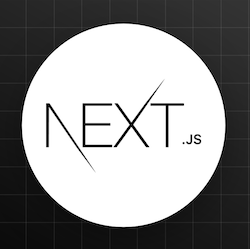Translate Next.js Apps
This Next.js application integration guide shows you how to translate Next.js applications in a few easy steps. Follow this tutorial to create a multilingual Next.js application translated to other languages for your international customers.

Below is a step-by-step guide for integrating Localize into your Next.js application.
If you do not have a Localize Project yet, signup here!
Because Next.js generates the HTML for you, the usual Localize Code Snippet method must be modified slightly.
Next.js >= Version 13
If you are using Next.js version 13 or newer, follow these instructions.
Placement
Decide where you want Localize to run:
- Globally (all pages):
- Add the scripts below to your Layout component (
app/layout.tsx), inside the<body>tag.
- Add the scripts below to your Layout component (
- Specific page only:
- Add the scripts below to the Page component (
app/page.tsx), inside the component’s returnJSX, preferably at the top level.
- Add the scripts below to the Page component (
Script
Replace PROJECT_KEY below with the key for your project, and add any additional initialization options where needed.
import Script from 'next/script';
<Script id="localize-script-1" src="https://global.localizecdn.com/localize.js" strategy="beforeInteractive"/>
<Script id="localize-script-2" strategy="afterInteractive"
dangerouslySetInnerHTML={{
__html: `
(function(a){if(!a.Localize){a.Localize={X:[]};var methods="translate","untranslate","phrase","initialize","translatePage","setLanguage","getLanguage","getSourceLanguage","detectLanguage","getAvailableLanguages","setWidgetLanguages","hideLanguagesInWidget","untranslatePage","bootstrap","prefetch","on","off","hideWidget","showWidget"];for(var i=0;i<methods.length;i++){a.Localize[methods[i]]=(function(m){return function(){a.Localize.X.push([m,arguments]);};})(methods[i]);}}})(window);
Localize.initialize({
key: 'PROJECT_KEY',
rememberLanguage: true
});
`,
}}
/>
Next.js < Version 13
There are two approaches for this when using Next.js version 13 or older:
- Method 1: Use a
Scriptcomponent fromnext/script - Method 2: Use inline script tags in the
Headcomponent fromnext/head
Both methods are mentioned in the Next.js Documentation.
Method 1: Using Script from next/script
Script from next/scriptThis involves using the Next.js Script component. In your index.js or base component.
- Copy the following
Scriptcomponent
<Script id="localize"
src="https://global.localizecdn.com/localize.js"
onLoad={() => {
(function(a){if(!a.Localize){a.Localize={X:[]};var methods="translate","untranslate","phrase","initialize","translatePage","setLanguage","getLanguage","getSourceLanguage","detectLanguage","getAvailableLanguages","setWidgetLanguages","hideLanguagesInWidget","untranslatePage","bootstrap","prefetch","on","off","hideWidget","showWidget"];for(var i=0;i<methods.length;i++){a.Localize[methods[i]]=(function(m){return function(){a.Localize.X.push([m,arguments]);};})(methods[i]);}}})(window);
Localize.initialize({ key: '[[PROJECT_KEY]]',rememberLanguage: true, });
}}
/>
- Paste the
Scriptinside yourindex.jsor base component:
// index.js
import Script from 'next/script';
import React from 'react';
export default function Home() {
return (
<Head>
<title>Next.js Localize Demo</title>
</Head>
{/* Start of Localize code snippet... */}
<Script id="localize"
src="https://global.localizecdn.com/localize.js"
onLoad={() => {
(function(a){if(!a.Localize){a.Localize={X:[]};var methods="translate","untranslate","phrase","initialize","translatePage","setLanguage","getLanguage","getSourceLanguage","detectLanguage","getAvailableLanguages","setWidgetLanguages","hideLanguagesInWidget","untranslatePage","bootstrap","prefetch","on","off","hideWidget","showWidget"];for(var i=0;i<methods.length;i++){a.Localize[methods[i]]=(function(m){return function(){a.Localize.X.push([m,arguments]);};})(methods[i]);}}})(window);
Localize.initialize({ key: '[[PROJECT_KEY]]',rememberLanguage: true, });
}}
/>
{/* ...end of Localize code snippet */}
<main>
<h1>My Next.js App!</h1>
<p>This phrase will be translated.</p>
</main>
);
}
-
Replace
[[PROJECT_KEY]]with the key for your project. -
Continue with the Post Installation Instructions below.
Method 2: Using Script Tags in Head from next/head
Head from next/head- Copy the modified Localize Code Snippet below:
<script async src="https://global.localizecdn.com/localize.js"></script>
<script>
{`(function(a){if(!a.Localize){a.Localize={X:[]};var methods="translate","untranslate","phrase","initialize","translatePage","setLanguage","getLanguage","getSourceLanguage","detectLanguage","getAvailableLanguages","setWidgetLanguages","hideLanguagesInWidget","untranslatePage","bootstrap","prefetch","on","off","hideWidget","showWidget"];for(var i=0;i<methods.length;i++){a.Localize[methods[i]]=(function(m){return function(){a.Localize.X.push([m,arguments]);};})(methods[i]);}}})(window);`}
</script>
<script>
{`Localize.initialize({ key: '[[PROJECT_KEY]]', rememberLanguage: true, });`}
</script>
- Paste this snippet into a
<Head/>block for the base page in your Next.js application. It should look similar to this:
// index.js
import Head from 'next/head';
import React from 'react';
export default function Home() {
return (
<Head>
<title>Next.js Localize Demo</title>
{/* Start of Localize code snippet... */}
<script async src="https://global.localizecdn.com/localize.js"></script>
<script>
{`(function(a){if(!a.Localize){a.Localize={X:[]};var methods="translate","untranslate","phrase","initialize","translatePage","setLanguage","getLanguage","getSourceLanguage","detectLanguage","getAvailableLanguages","setWidgetLanguages","hideLanguagesInWidget","untranslatePage","bootstrap","prefetch","on","off","hideWidget","showWidget"];for(var i=0;i<methods.length;i++){a.Localize[methods[i]]=(function(m){return function(){a.Localize.X.push([m,arguments]);};})(methods[i]);}}})(window);`}
</script>
<script>
{`Localize.initialize({ key: '[[PROJECT_KEY]]', rememberLanguage: true, });`}
</script>
{/* ...end of Localize code snippet */}
</Head>
<main>
<h1>My Next.js App!</h1>
<p>This phrase will be translated.</p>
</main>
);
}
-
Replace
[[PROJECT_KEY]]with the key for your project. -
Continue with the Post Installation Instructions below.
Post Installation Instructions
1. Add Initialization Options
Add any desired options to the Localize.initialize() call above, check here for the full list of possible options.
Some popular options include:
- autoApprove - use to fully automate your translation workflow
- localizeImages - allows for localization of images in your site
2. Load your application in a browser.
- Visit your website (or application).
- Select one of your target languages using the language-switching widget.
- Refresh the page.
- Lather, rinse, and repeat, for each page on your site.
Localize will automatically begin detecting new content on the pages you visit and bring it into your dashboard.
3. Approve phrases
Then head on over to the Manage Phrases page to approve phrases in the Localize dashboard.

4. Phrases not showing up?
If you are not seeing phrases show up in your Pending bin in the Localize dashboard, follow the troubleshooting instructions here.
Need Help?
Contact support for custom integration help or troubleshooting!
Updated 1 day ago
